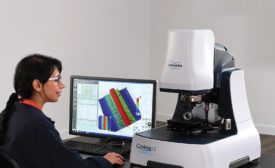Articles by Leah Pickett
Better quality is possible with IO-Link and machine learning.
Read More
New Features, Industries Elevate Laser Trackers
A big selling point of recent iterations is seamless integration into a user’s work process.
June 1, 2019
Test & Inspection
Additive Manufacturing in Production Presents Challenges, Opportunities for Quality
Applying quality control measures to additive technologies requires a holistic approach.
May 1, 2019
How a Global Manufacturer Prevents Defective Parts with SPC Software
Easy monitoring and actionable reporting are key.
April 30, 2019
Move from “Inspect and Reject” to “Predict and Prevent” with SPC Software
A senior quality leader details his approach to making significant quality improvements.
April 2, 2019
The Value of One Software for Several Types of Inspection Systems
A common software for multiple instruments, often from multiple OEMs, is ideal.
April 2, 2019
As Automation Grows, Microscopes Evolve
Industry 4.0 advances a variety of microscopy solutions.
April 1, 2019
Q&A: 3D Smart Sensors, Deep Learning, and The Future of Automated Quality Control
The CEO of LMI Technologies describes how 3D sensors are integral to a new era of quality.
March 1, 2019
Stay in the know with Quality’s comprehensive coverage of
the manufacturing and metrology industries.
eNewsletter | Website | eMagazine
JOIN TODAY!Copyright ©2024. All Rights Reserved BNP Media.
Design, CMS, Hosting & Web Development :: ePublishing









